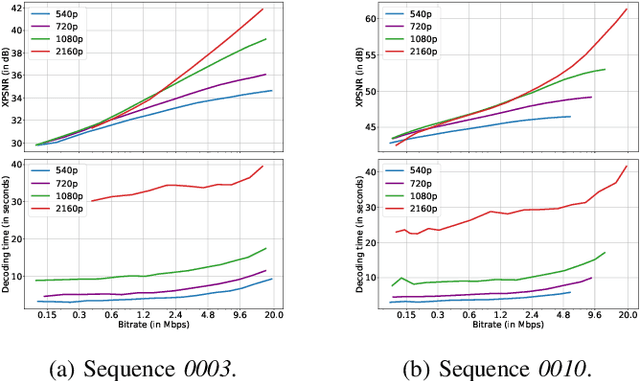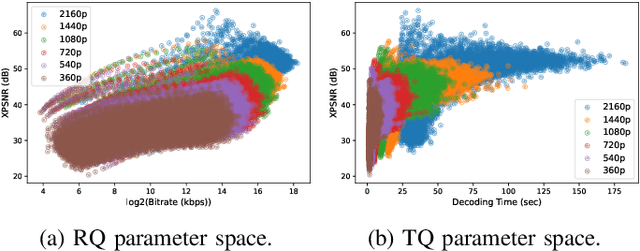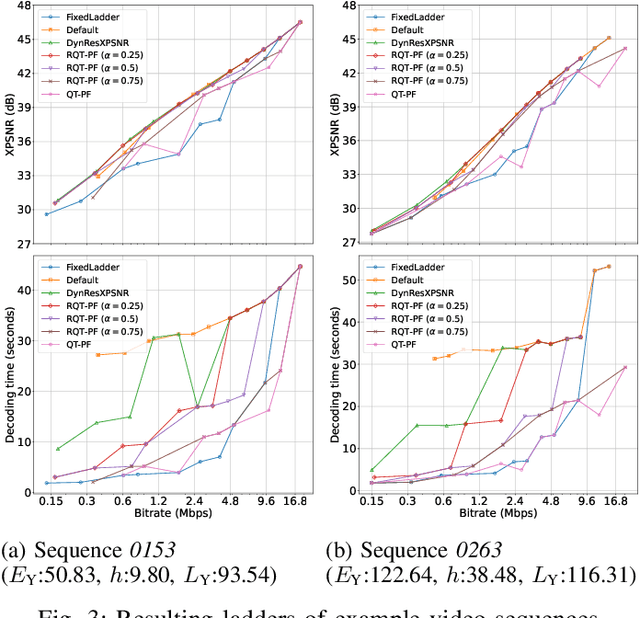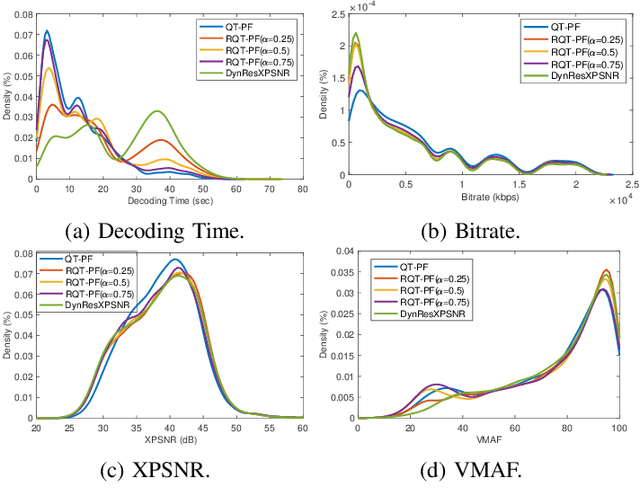Vignesh V Menon
Decoding Complexity-Rate-Quality Pareto-Front for Adaptive VVC Streaming
Sep 27, 2024



Abstract:Pareto-front optimization is crucial for addressing the multi-objective challenges in video streaming, enabling the identification of optimal trade-offs between conflicting goals such as bitrate, video quality, and decoding complexity. This paper explores the construction of efficient bitrate ladders for adaptive Versatile Video Coding (VVC) streaming, focusing on optimizing these trade-offs. We investigate various ladder construction methods based on Pareto-front optimization, including exhaustive Rate-Quality and fixed ladder approaches. We propose a joint decoding time-rate-quality Pareto-front, providing a comprehensive framework to balance bitrate, decoding time, and video quality in video streaming. This allows streaming services to tailor their encoding strategies to meet specific requirements, prioritizing low decoding latency, bandwidth efficiency, or a balanced approach, thus enhancing the overall user experience. The experimental results confirm and demonstrate these opportunities for navigating the decoding time-rate-quality space to support various use cases. For example, when prioritizing low decoding latency, the proposed method achieves decoding time reduction of 14.86% while providing Bjontegaard delta rate savings of 4.65% and 0.32dB improvement in the eXtended Peak Signal-to-Noise Ratio (XPSNR)-Rate domain over the traditional fixed ladder solution.
Convex-hull Estimation using XPSNR for Versatile Video Coding
Jun 19, 2024Abstract:As adaptive streaming becomes crucial for delivering high-quality video content across diverse network conditions, accurate metrics to assess perceptual quality are essential. This paper explores using the eXtended Peak Signal-to-Noise Ratio (XPSNR) metric as an alternative to the popular Video Multimethod Assessment Fusion (VMAF) metric for determining optimized bitrate-resolution pairs in the context of Versatile Video Coding (VVC). Our study is rooted in the observation that XPSNR shows a superior correlation with subjective quality scores for VVC-coded Ultra-High Definition (UHD) content compared to VMAF. We predict the average XPSNR of VVC-coded bitstreams using spatiotemporal complexity features of the video and the target encoding configuration and then determine the convex-hull online. On average, the proposed convex-hull using XPSNR (VEXUS) achieves an overall quality improvement of 5.84 dB PSNR and 0.62 dB XPSNR while maintaining the same bitrate, compared to the default UHD encoding using the VVenC encoder, accompanied by an encoding time reduction of 44.43% and a decoding time reduction of 65.46%. This shift towards XPSNR as a guiding metric shall enhance the effectiveness of adaptive streaming algorithms, ensuring an optimal balance between bitrate efficiency and perceptual fidelity with advanced video coding standards.
 Add to Chrome
Add to Chrome Add to Firefox
Add to Firefox Add to Edge
Add to Edge